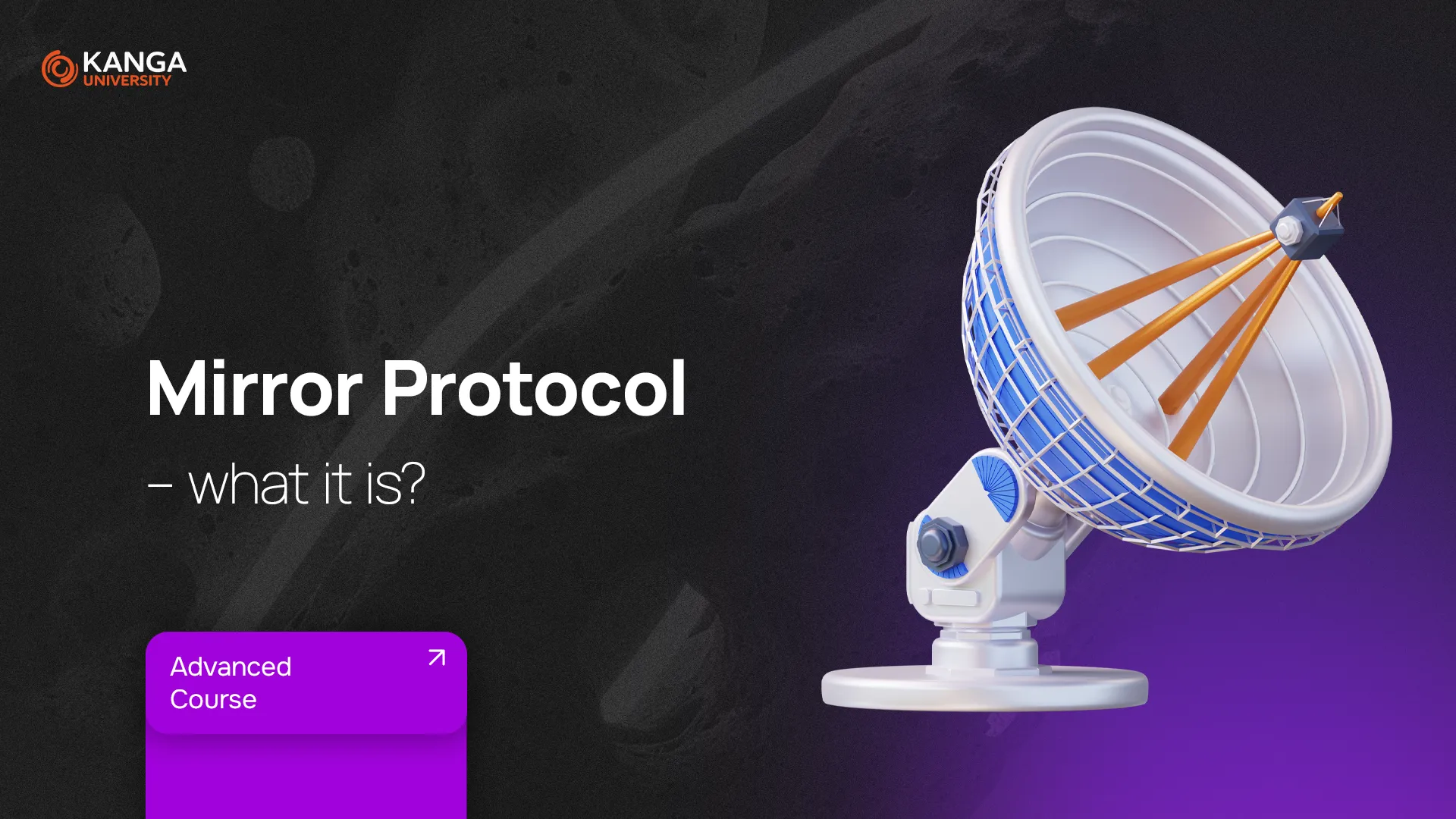
Imagine being able to invest in Tesla shares, gold, oil, or ETFs — without opening a brokerage account, going through ID verification, or even owning the assets themselves.
Sounds futuristic? That’s exactly what Mirror Protocol made possible.
It’s one of the most innovative projects in decentralized finance (DeFi), and although it’s no longer at its peak, its core ideas continue to shape how crypto and traditional finance can intersect.
What is Mirror Protocol?
Mirror Protocol is a decentralized application that allows users to create and trade synthetic assets, also known as mAssets. These are digital tokens that mirror the price of real-world assets — like stocks or commodities — without requiring you to actually own them.
In short: Mirror lets you get exposure to the price of Tesla shares, for example, without needing to go through a traditional stock exchange.
Everything happens on the blockchain — borderless, permissionless, and without middlemen.
How does it work?
Let’s say you want to create a synthetic version of Company X’s stock, called mX. Here’s how you’d do it on Mirror Protocol:
-
Collateral is required – You lock up crypto assets as collateral.
-
Overcollateralization – The platform requires you to provide more value than the mAsset you want to create (to reduce volatility risk).
-
Smart contracts handle the rest – A mX token is minted, mirroring the price of the real stock.
-
Real-time price updates – An oracle service (Band Protocol, in this case) updates the price to match the real-world asset.
Once your mX is created, you can trade it just like any other crypto token. And the best part? Anyone, anywhere in the world, can do this — no ID check required.
Who participates in the system?
Like any decentralized protocol, Mirror involves several key roles:
-
Minters – Create new mAssets by depositing collateral.
-
Traders – Buy and sell mAssets like any other tokens.
-
Liquidity Providers (LPs) – Supply funds to liquidity pools, enabling trades and earning rewards.
-
Stakers – Lock up either LP tokens or the native MIR token to earn rewards and vote on governance decisions.
Mirror was built on the Tendermint Delegated Proof of Stake (dPoS) consensus mechanism — the same system used by the Terra blockchain. It also became available on Ethereum and Binance Smart Chain for broader accessibility.
What is the MIR token?
MIR is Mirror Protocol’s native token. It’s used for:
-
Governance – Token holders vote on proposals for the platform’s future.
-
Incentives – Rewards are distributed to users who provide liquidity or stake their tokens.
There’s a hard cap of 370,575,000 MIR tokens, with just over 153 million currently in circulation (as of April 2025). Because of the capped supply, inflation is not an issue for MIR holders.
So… what happened to Mirror Protocol?
Mirror launched in 2020 and was originally developed by Terraform Labs, the same company behind the Terra blockchain. It quickly gained attention for bridging traditional finance and DeFi.
But after the collapse of Terra/Luna in 2022, Mirror Protocol lost momentum:
-
Its development was halted.
-
User activity and liquidity plummeted.
-
Core features stopped functioning reliably.
While Mirror’s source code is still available and some parts of the community attempted to keep it alive, the protocol is no longer actively maintained or used at scale.
Why is it still worth knowing about?
Even though Mirror Protocol is now largely inactive, it was a pioneer in the world of synthetic assets. It showed that:
-
You can recreate financial markets on the blockchain.
-
Decentralized systems can give global access to traditional assets.
-
DeFi can unlock new investment opportunities for users outside the legacy financial system.
Today, projects like Synthetix and UMA have taken the baton and continue developing the synthetic asset space.
Summary
-
Mirror Protocol enabled users to trade tokenized versions of real-world assets — from stocks to commodities — without owning them.
-
It worked through smart contracts, overcollateralized minting, and oracle-based price feeds.
-
The project is no longer active following the Terra ecosystem crash, but its ideas live on in newer DeFi protocols.
-
The MIR token still exists, though its use case is now very limited.
Exchange cryptocurrencies with Kanga Exchange